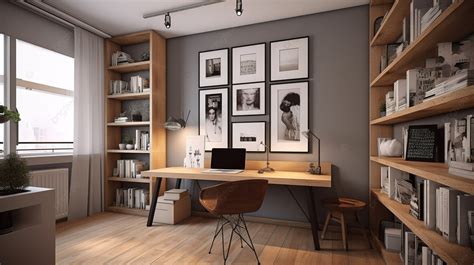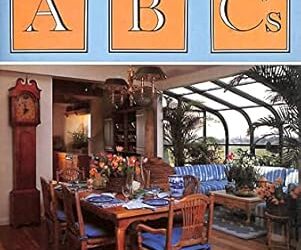Georgian interior design sets the stage for this enthralling narrative, offering readers a glimpse into a story that is rich in detail and brimming with originality from the outset.
As we delve into the world of Georgian interior design, we uncover the key characteristics, historical influences, and color palettes that define this classic style.
 . Upholstery in rich fabrics like velvet and silk were commonly used on furniture pieces to exude opulence. Additionally, elaborate draperies made of heavy damasks or silk taffeta were used to dress windows, enhancing the grandeur of the room.
. Upholstery in rich fabrics like velvet and silk were commonly used on furniture pieces to exude opulence. Additionally, elaborate draperies made of heavy damasks or silk taffeta were used to dress windows, enhancing the grandeur of the room.

Overview of Georgian Interior Design
Georgian interior design is characterized by elegance, symmetry, and a sense of balance. It reflects the grandeur and sophistication of the Georgian era, which lasted from the early 18th century to the early 19th century. Georgian interiors are known for their classical proportions, intricate detailing, and luxurious materials.Key Characteristics of Georgian Interior Design
- Symmetry: Georgian interiors often feature symmetrical layouts and designs, creating a sense of harmony and order.
- Neoclassical Influence: The Georgian period was influenced by Neoclassical design, with elements such as columns, arches, and Greek and Roman motifs.
- High Ceilings: Georgian homes typically have high ceilings, adding to the sense of grandeur and scale.
- Paneling and Molding: Intricate paneling and molding are common in Georgian interiors, adding texture and visual interest.
Historical Influences on Georgian Interior Design
Georgian interior design was influenced by a range of historical styles, including Palladianism, Rococo, and Chinoiserie. These influences can be seen in the architectural details, furniture, and decorative elements of Georgian interiors.Color Palettes in Georgian Interiors
Georgian interiors often feature a sophisticated color palette, including soft pastels, rich jewel tones, and classic neutrals. Colors such as pale blue, sage green, soft pink, and deep burgundy are commonly used to create a sense of elegance and refinement in Georgian spaces.Georgian Architecture Influence
Georgian architecture has a significant impact on interior design, influencing the overall aesthetic and layout of spaces.Key Architectural Elements in Georgian Interior Design
- Neoclassical Influence: Georgian interiors often feature neoclassical elements such as columns, pediments, and moldings, reflecting the architectural style of the period.
- Symmetry and Balance: Georgian design places a strong emphasis on symmetry and balance, with rooms typically arranged in a harmonious and orderly fashion.
- Sash Windows: Large, multi-paned sash windows are a common feature in Georgian interiors, allowing for ample natural light and creating an elegant aesthetic.
- Cornices and Crown Molding: Elaborate cornices and crown molding are frequently used in Georgian interior design to add decorative detail and enhance the sense of grandeur.
Furniture and Decor
In Georgian interior design, furniture and decor play a crucial role in capturing the elegance and sophistication of the era. Let's explore the typical furniture pieces used, ways to incorporate antique furniture in modern spaces, and the importance of textiles in Georgian interiors.Typical Furniture Pieces in Georgian Interior Design
- Chippendale chairs: Known for their intricate carvings and elegant curves, Chippendale chairs are a staple in Georgian interior design.
- Mahogany tables: Georgian interiors often feature mahogany tables with delicate inlays and cabriole legs, adding a touch of luxury to the space.
- Secretary desks: These multi-functional desks with drop-down writing surfaces and ample storage were popular in Georgian homes.
Incorporating Antique Furniture in Modern Georgian-Inspired Spaces
Integrating antique furniture into a modern Georgian-inspired space can create a unique and timeless look. One approach is to mix antique pieces with contemporary furniture to achieve a harmonious balance. For example, pairing a Georgian dining table with modern acrylic chairs can create an interesting contrast.Use of Textiles in Georgian Interiors
Textiles play a significant role in Georgian interiors, adding warmth and texture to the spaceColor Schemes and Patterns
When it comes to Georgian interior design, color schemes and patterns play a crucial role in creating an elegant and harmonious space. The right combination of colors and patterns can enhance the classical and timeless feel of Georgian interiors.Choosing and Using Colors
In Georgian interior design, colors tend to be soft, muted, and sophisticated. Opt for shades like soft blues, pale greens, dusty pinks, and creamy whites to create a sense of elegance and refinement. These colors work well with the intricate architectural details and elegant furniture pieces typical of Georgian interiors.Popular Patterns in Georgian Interiors
Georgian interiors often feature classic patterns like chintz, damask, and toile. Chintz is a floral pattern that adds a touch of whimsy and charm to a space, while damask exudes luxury and sophistication with its intricate designs. Toile, on the other hand, is a scenic pattern that brings a sense of history and tradition to Georgian interiors.Mixing Patterns Effectively
When mixing patterns in a Georgian-inspired space, it's important to strike a balance between different scales and types of patterns. Pair a large-scale pattern with a smaller one to create visual interest without overwhelming the space. Additionally, consider using a neutral background to anchor the patterns and prevent them from clashing.Lighting and Accessories
In Georgian interior design, lighting plays a crucial role in creating the desired ambiance and highlighting the intricate details of the architecture and decor.Importance of Lighting
Proper lighting in Georgian interiors enhances the elegance and sophistication of the space. It helps to showcase the decorative elements, emphasizes the architectural features, and creates a warm and inviting atmosphere.Types of Lighting Fixtures
- Chandeliers: Ornate chandeliers with crystal or metal details are commonly used in Georgian interiors, adding a touch of luxury and grandeur.
- Sconces: Wall sconces provide ambient lighting and can be placed strategically to highlight artwork or architectural elements.
- Candelabras: Traditional candelabras or candle holders add a classic touch to the lighting scheme, especially for formal dining rooms or entryways.
Selecting and Placing Accessories
Accessories play a vital role in enhancing the Georgian design scheme by adding layers of texture, color, and visual interest. When selecting accessories, opt for elegant pieces that complement the traditional style of Georgian interiors.- Antique Mirrors: Large, ornate mirrors can be used to reflect light and create the illusion of more space in Georgian rooms.
- Porcelain Vases: Delicate porcelain vases in classic shapes and patterns can add a touch of refinement to mantels or tabletops.
- Tapestries: Intricately woven tapestries can be displayed on walls to add a sense of history and sophistication to the space.












